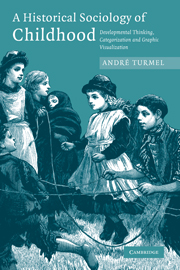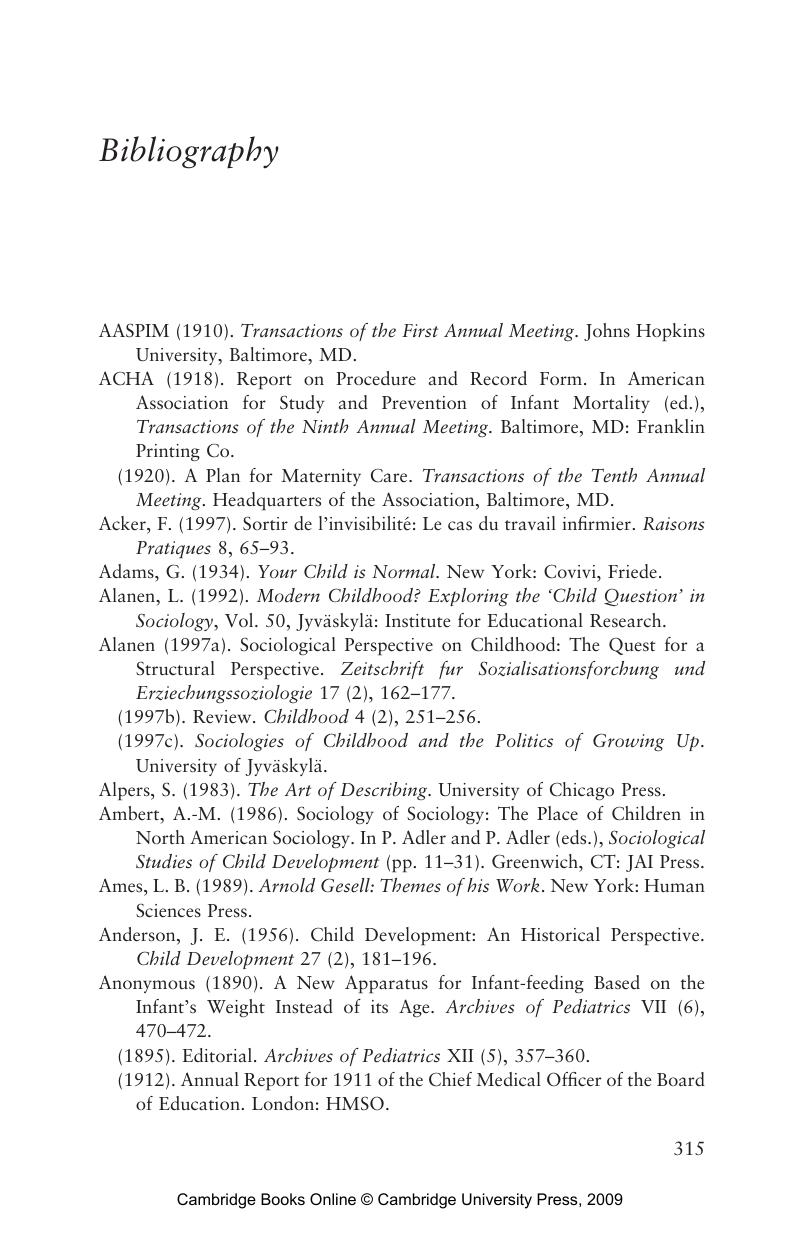 A Historical Sociology of Childhood
A Historical Sociology of Childhood Book contents
- Frontmatter
- Contents
- List of illustrations
- Acknowledgements
- Introduction
- 1 Children in the collective
- 2 Graphs, charts and tabulations: the textual inscription of children
- 3 Social technologies: regulation and resistance
- 4 The normal child: translation and circulation
- 5 Developmental thinking as a cognitive form
- Conclusion
- Appendix
- Bibliography
- Index
- References
Bibliography
Published online by Cambridge University Press: 22 September 2009
- Frontmatter
- Contents
- List of illustrations
- Acknowledgements
- Introduction
- 1 Children in the collective
- 2 Graphs, charts and tabulations: the textual inscription of children
- 3 Social technologies: regulation and resistance
- 4 The normal child: translation and circulation
- 5 Developmental thinking as a cognitive form
- Conclusion
- Appendix
- Bibliography
- Index
- References
Summary

- Type
- Chapter
- Information
- A Historical Sociology of ChildhoodDevelopmental Thinking, Categorization and Graphic Visualization, pp. 315 - 338Publisher: Cambridge University PressPrint publication year: 2008


